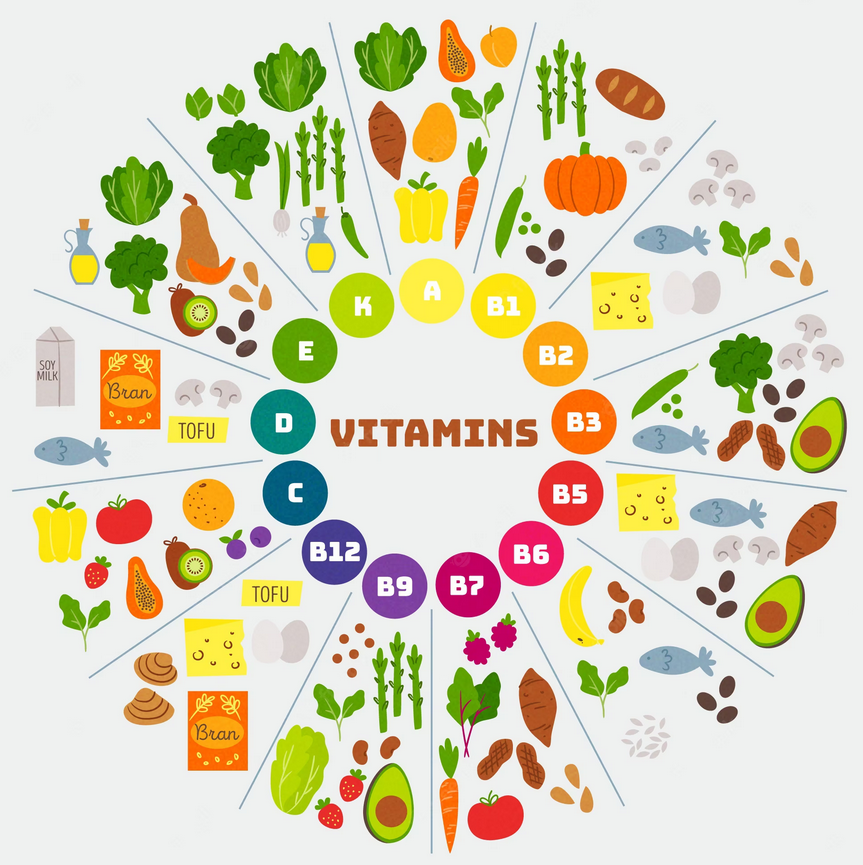In chemistry, compounds are classified as organic or inorganic based on the presence of carbon atoms in their molecular structures. Organic compounds generally contain carbon atoms covalently bonded with other elements, primarily hydrogen, oxygen, and nitrogen. Inorganic compounds, on the other hand, typically do not have carbon. However, there are exceptions to this rule, such as carbonates (like calcium carbonate) and cyanides (like sodium cyanide), which are considered inorganic despite containing carbon.

Are Vitamins Inorganic Compounds?
No, Vitamins are organic compounds because they all contain carbon atoms in their structures. For example, Vitamin C, ascorbic acid, comprises six carbon, eight hydrogen, and six oxygen atoms. The B vitamins, like B1 (thiamine), B2 (riboflavin), B3 (niacin), B6, B9 (folic acid), B12 (cobalamin), and others, are also carbon-based compounds, as are the fat-soluble vitamins A, D, E, and K.
Vitamins are a group of compounds necessary for average growth and development. They are usually divided into two types based on their solubility: fat-soluble (Vitamins A, D, E, and K) and water-soluble (Vitamins B and C).
The misconception that vitamins are inorganic compounds may stem from confusion about the terms “organic” and “inorganic” in chemistry or from the classification of vitamins and minerals as micronutrients.
Why do people think that vitamins are inorganic?
In chemistry, “organic” refers to compounds that contain carbon atoms, while “inorganic” refers to compounds that do not. This is a different use of the term “organic” than in the context of food labeling, where “organic” refers to food produced without the use of synthetic chemicals or genetically modified components.
Vitamins and minerals are classified as micronutrients, nutrients humans and other organisms require in small amounts for proper physiological and biochemical functioning. However, vitamins and minerals are different types of compounds. Vitamins are organic compounds containing carbon, while minerals are inorganic and do not contain carbon.
Sometimes, people lump vitamins and minerals together as “inorganic” because minerals are indeed inorganic, and the two groups of compounds are often discussed in nutrition. However, this is a misunderstanding: vitamins are organic compounds, while minerals are inorganic.
Proof that Vitamins are Organic Compounds
Key points that illustrate why vitamins are considered organic compounds:
- Carbon Composition: All vitamins contain carbon atoms, a defining characteristic of organic compounds. For instance, Vitamin C (ascorbic acid) comprises six carbon, eight hydrogen, and six oxygen atoms.
- Complex Structures: Vitamins have complex structures, often composed of multiple carbon chains or rings, a common feature of organic compounds. For example, Vitamin B3 (niacin) has a pyridine ring structure, and Vitamin D3 (cholecalciferol) has a carbon-based secosteroid design.
- Covalent Bonds: Vitamins are connected by covalent bonds, a feature of organic compounds. In these bonds, atoms (like carbon and hydrogen in vitamins) share electrons.
- Biological Origin: Many organic compounds, including vitamins, are synthesized by living organisms. For example, humans can synthesize Vitamin D3 in the skin when exposed to sunlight, and many plants and microorganisms can synthesize various B vitamins.
- Solubility: Vitamins exhibit a property common to many organic compounds: similar solubility characteristics. For instance, fat-soluble vitamins (A, D, E, K) dissolve in organic solvents and oils, while water-soluble vitamins (B, C) dissolve in water.
- Organic Reactions: Vitamins participate in typical organic reactions due to the presence of functional groups like hydroxyl (-OH), carboxyl (-COOH), and amine (-NH2) groups. For example, the carboxyl group in ascorbic acid (Vitamin C) can donate a proton (H+), behaving as an acid, which is a common property of organic compounds with this group.
- Function in Living Systems: Like many organic compounds, vitamins play critical roles in the biochemical processes of living organisms. For example, they function as coenzymes and regulators of metabolic pathways essential for life.
In conclusion, vitamins are classified as organic compounds because of their carbon composition, complex structures, covalent bonding, biological origin, solubility, participation in organic reactions, and function in living systems.
Conclusion
So, to answer your question, vitamins are not inorganic compounds; they are organic compounds. They contain carbon atoms bonded to hydrogen and other elements, which is the defining characteristic of organic compounds.
- How Many Tablespoons is One Clove of Garlic? - June 26, 2024
- How to Measure 3/4 Cup When You Don’t Have the Right Measuring Cup? - June 6, 2024
- How Much Does Cooked Pasta Weight Compare To Dry? - April 30, 2024
